Special Report
States With the Most Indian Reservations and Tribal Areas

Published:
Last Updated:

According to the U.S. Bureau of Indian Affairs, there are 574 federally recognized Native American and Alaska Native tribes and villages across the country. The U.S. government has signed treaties with the tribes that ensure their sovereignty, and the U.S. is legally obligated to “protect tribal treaty rights, lands, assets, and resources,” per the BIA.
These treaties ensure that the U.S. maintains reservations — federal lands set aside as permanent tribal homelands.. These reservations sit on more than 56 million acres of U.S. land held in trust by the government. These lands are home to nearly 5.5 million Native American people, though the vast majority are located in just a handful of states.
24/7 Tempo reviewed data from the U.S. Census Bureau’s American Community Survey to identify the states with the most Indian reservations and tribal areas. These lands include reservations, off-reservation trust land, state designated tribal statistical areas, Alaska native village statistical area, and more.
The vast majority of reservations and tribal areas are located in the Southern and Western parts of the country. This is largely due to the Indian Removal Act of 1830, when all tribes in the Eastern U.S. were forcibly relocated to areas west of the Mississippi River. To this day, a large share of the population in many of these Southern and Western states still have Native American ancestry. These are the states with the largest Native American populations.
About half of all U.S. states get their names from a Native American words or phrases used to describe the area before the arrival of Europeans. These are all the states with a Native American name.
Click here to see the state with the most Indian reservations and tribal areas.
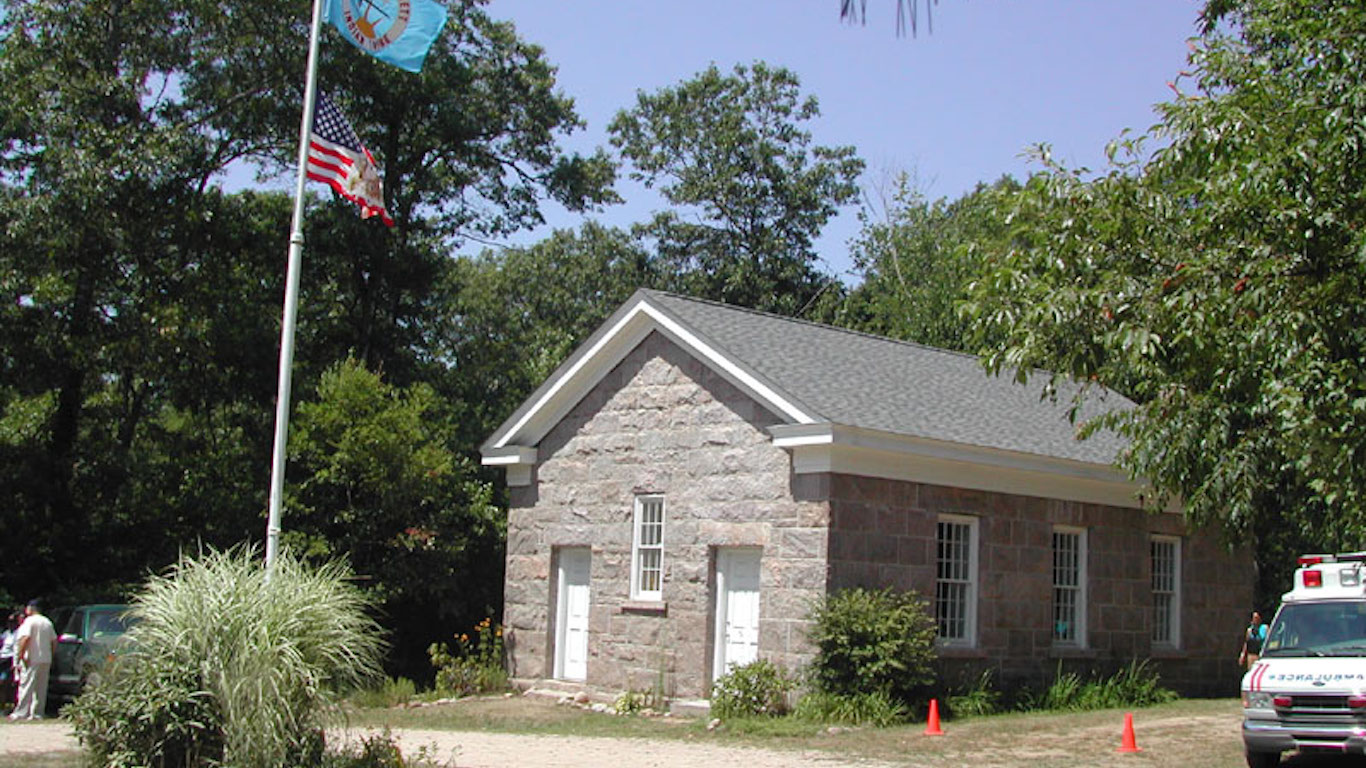
38. Rhode Island (tied)
> Number of American Indian areas: 1
> State population living in American Indian areas: 0
> Largest American Indian area: Narragansett Reservation (population: 0)
[in-text-ad]
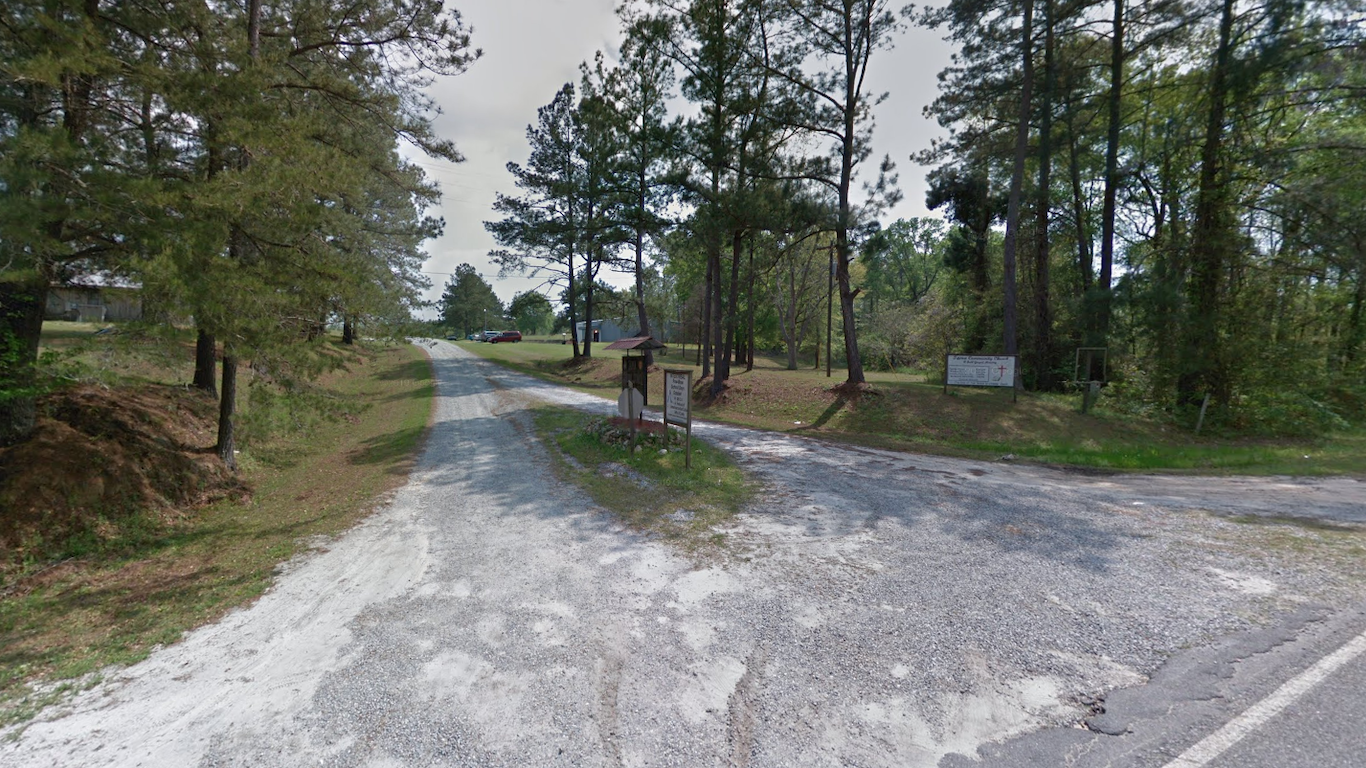
37. Georgia (tied)
> Number of American Indian areas: 1
> State population living in American Indian areas: 11
> Largest American Indian area: Tama Reservation (population: 11)
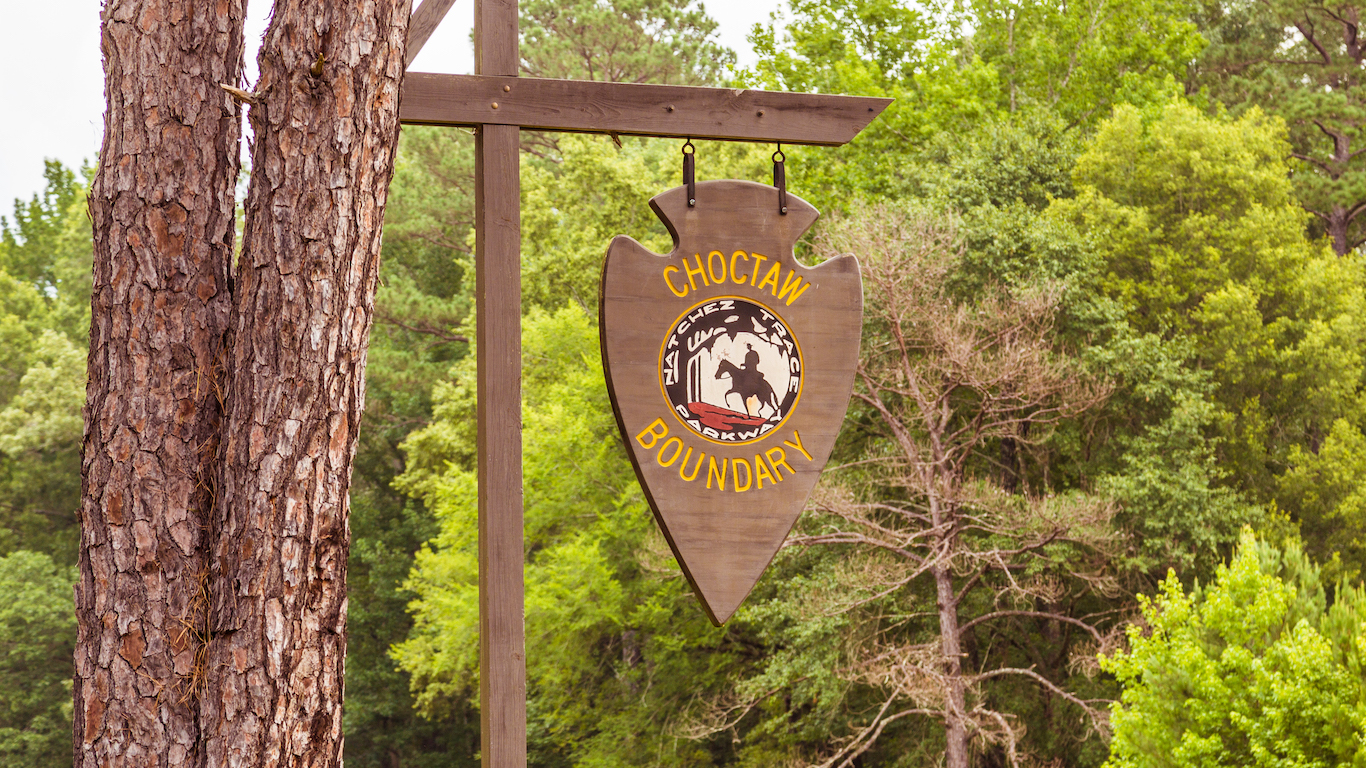
36. Mississippi (tied)
> Number of American Indian areas: 1
> State population living in American Indian areas: 7,867
> Largest American Indian area: Mississippi Choctaw Reservation (population: 7,867)
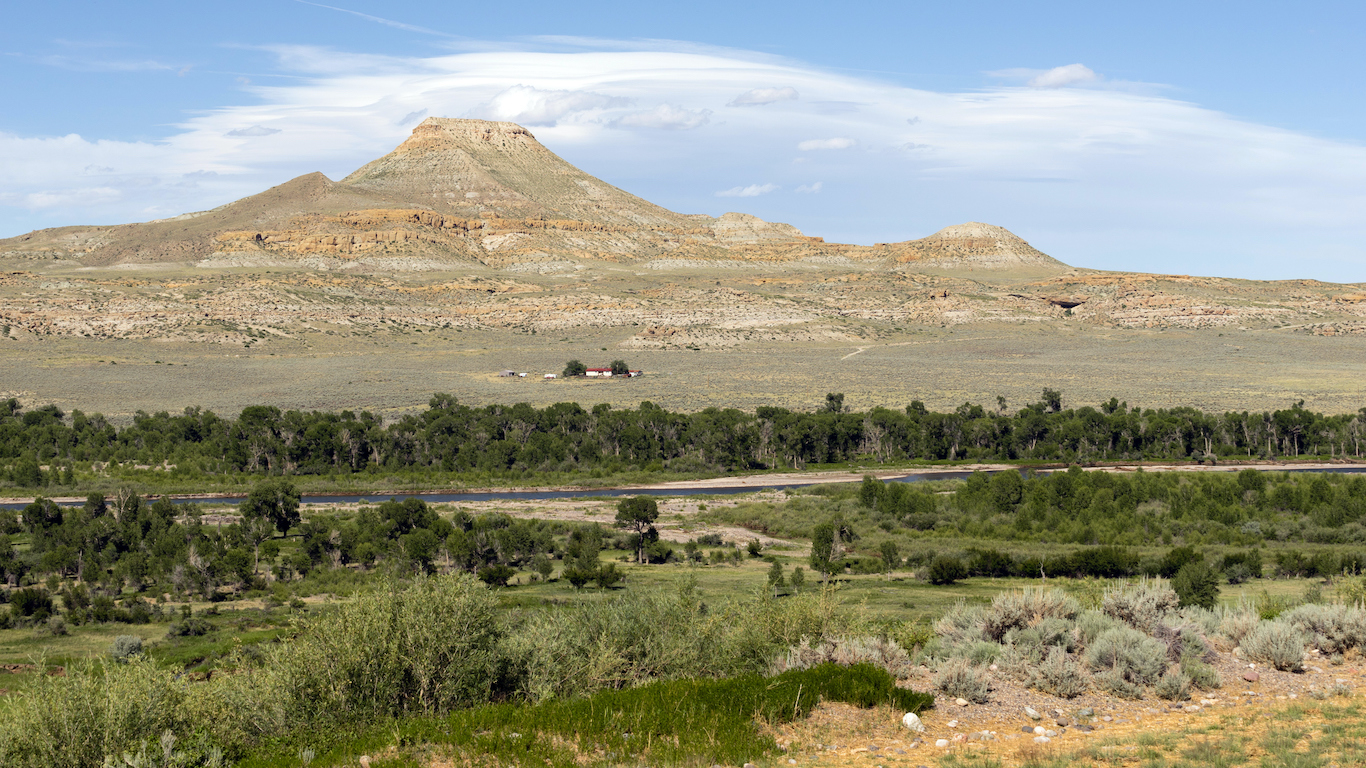
35. Wyoming (tied)
> Number of American Indian areas: 1
> State population living in American Indian areas: 26,855
> Largest American Indian area: Wind River Reservation and Off-Reservation Trust Land (population: 26,855)
[in-text-ad-2]
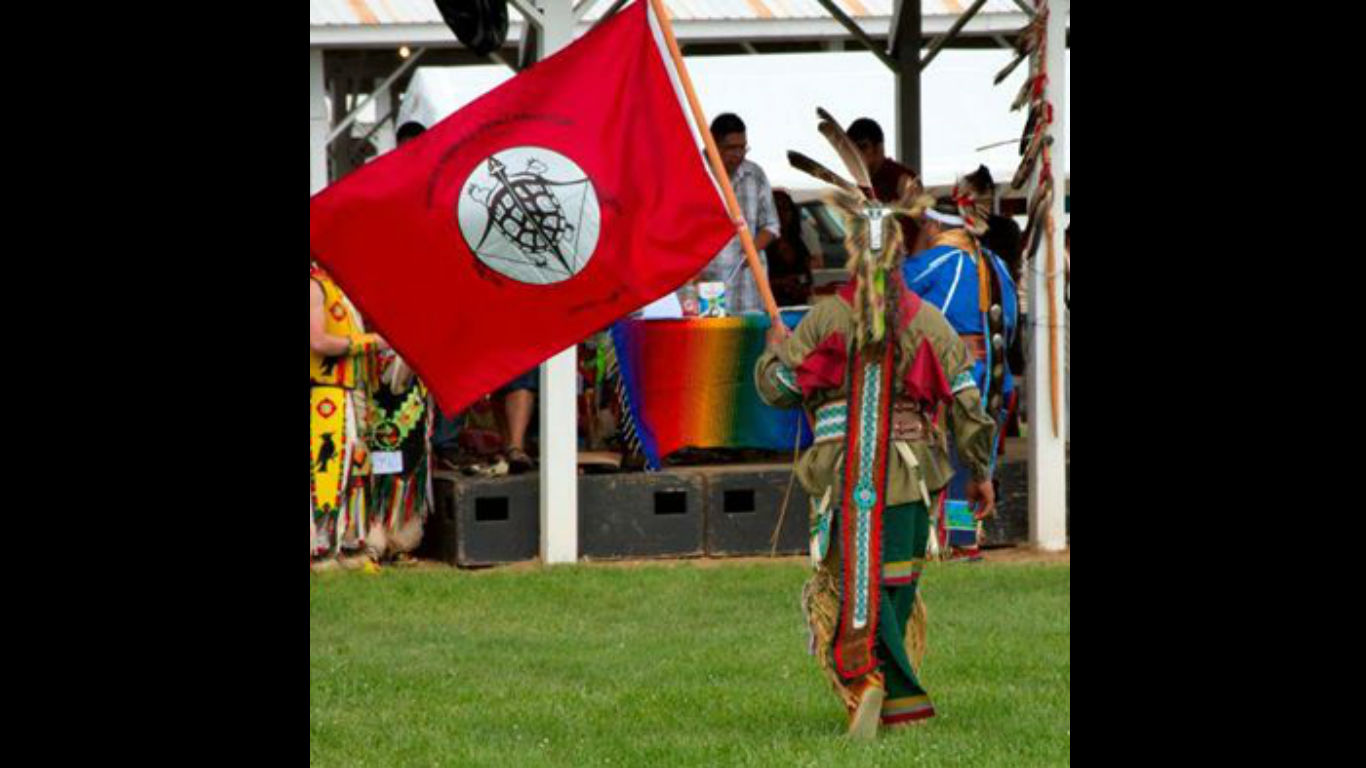
34. New Jersey (tied)
> Number of American Indian areas: 2
> State population living in American Indian areas: 6,926
> Largest American Indian area: Nanticoke Lenni Lenape SDTSA (population: 5,932)

33. Delaware (tied)
> Number of American Indian areas: 2
> State population living in American Indian areas: 9,213
> Largest American Indian area: Nanticoke Indian Tribe SDTSA (population: 8,546)
[in-text-ad]
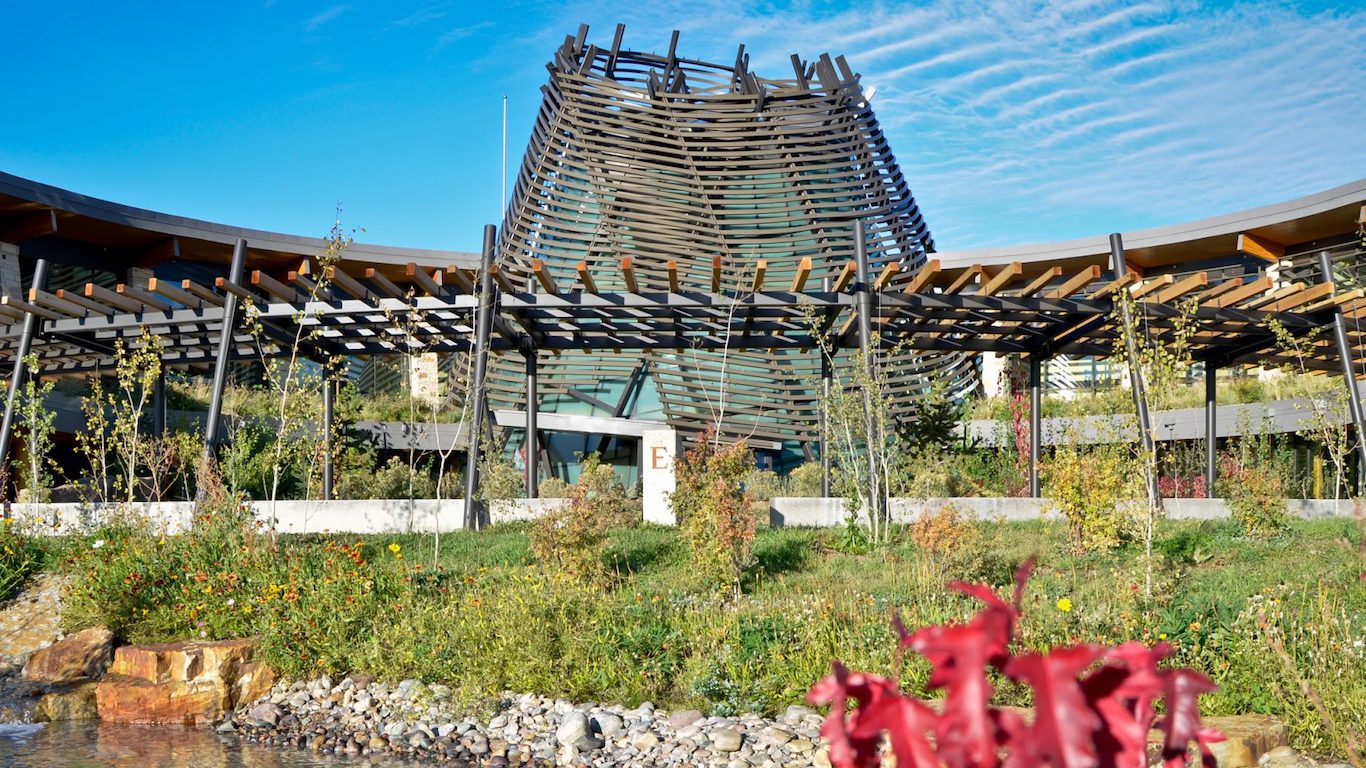
32. Colorado (tied)
> Number of American Indian areas: 2
> State population living in American Indian areas: 14,923
> Largest American Indian area: Southern Ute Reservation (population: 13,379)

31. Massachusetts (tied)
> Number of American Indian areas: 3
> State population living in American Indian areas: 66
> Largest American Indian area: Wampanoag-Aquinnah Trust Land (population: 66)

30. Texas (tied)
> Number of American Indian areas: 3
> State population living in American Indian areas: 2,256
> Largest American Indian area: Ysleta del Sur Pueblo and Off-Reservation Trust Land (population: 1,220)
[in-text-ad-2]
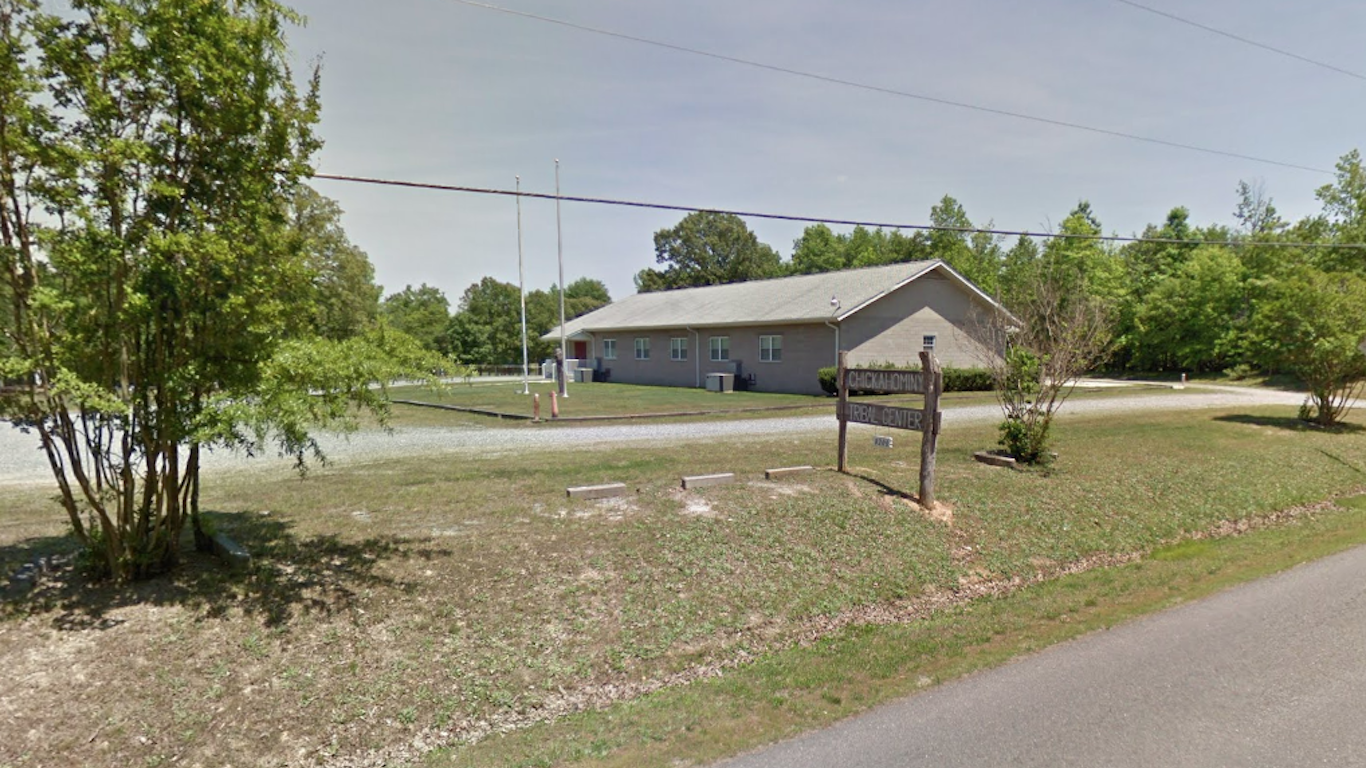
29. Virginia (tied)
> Number of American Indian areas: 4
> State population living in American Indian areas: 3,987
> Largest American Indian area: Chickahominy SDTSA (population: 3,601)
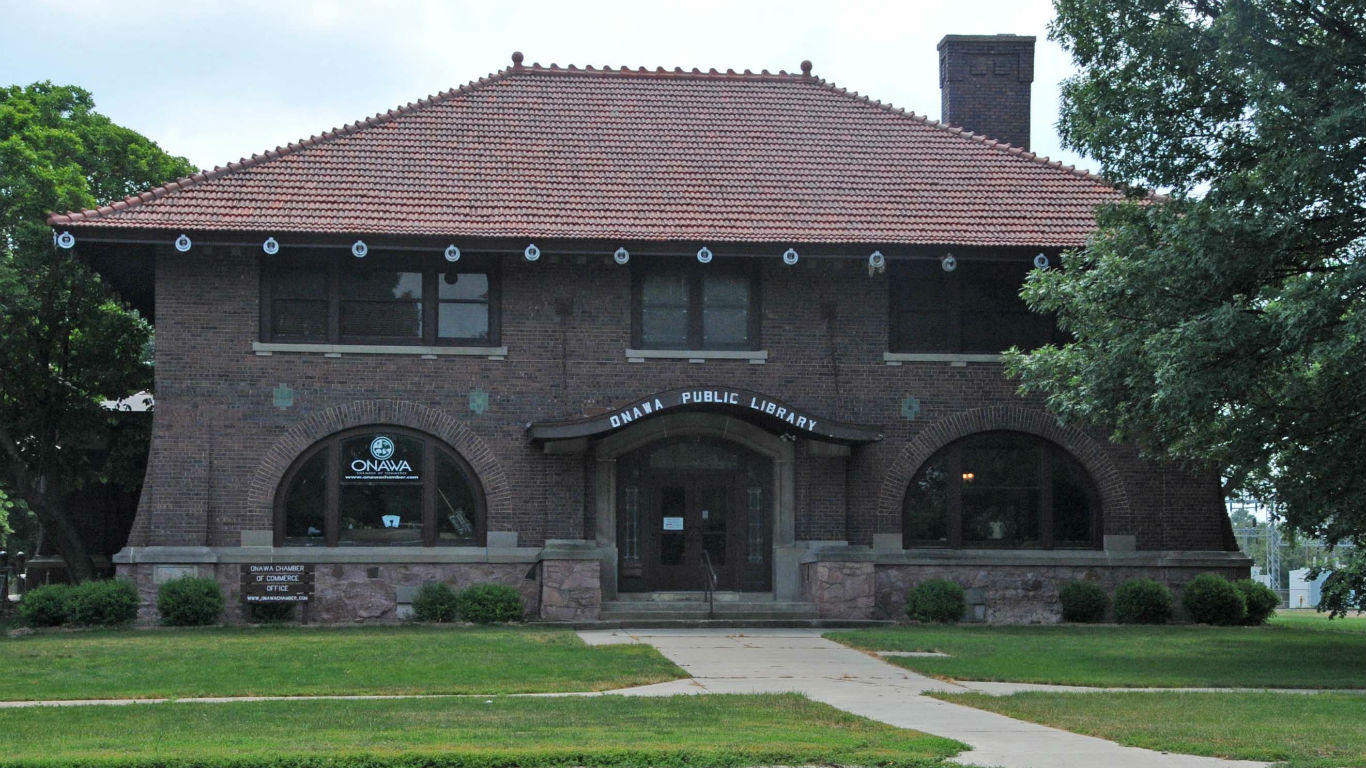
28. Iowa (tied)
> Number of American Indian areas: 4
> State population living in American Indian areas: 8,872
> Largest American Indian area: Omaha Reservation (population: 4,831)
[in-text-ad]
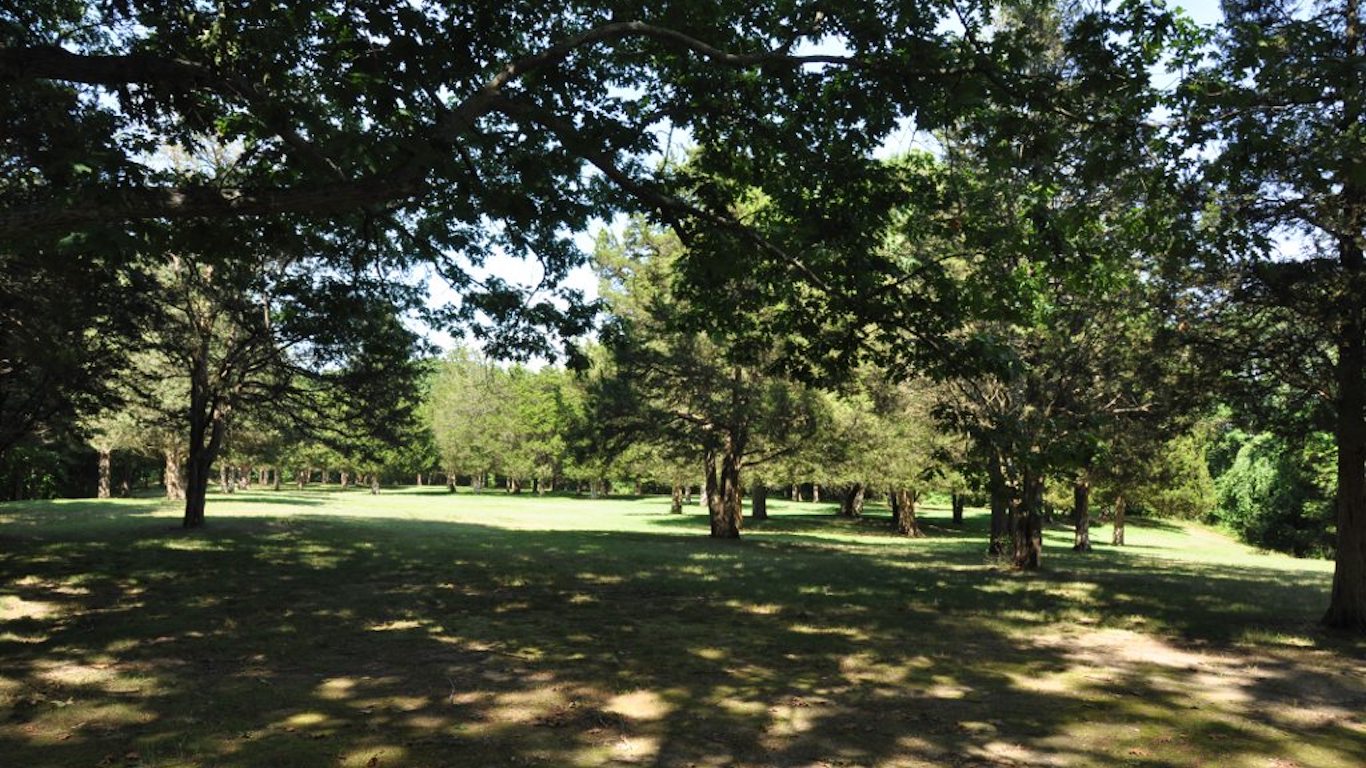
27. Connecticut (tied)
> Number of American Indian areas: 5
> State population living in American Indian areas: 547
> Largest American Indian area: Mohegan Reservation and Off-Reservation Trust Land (population: 283)
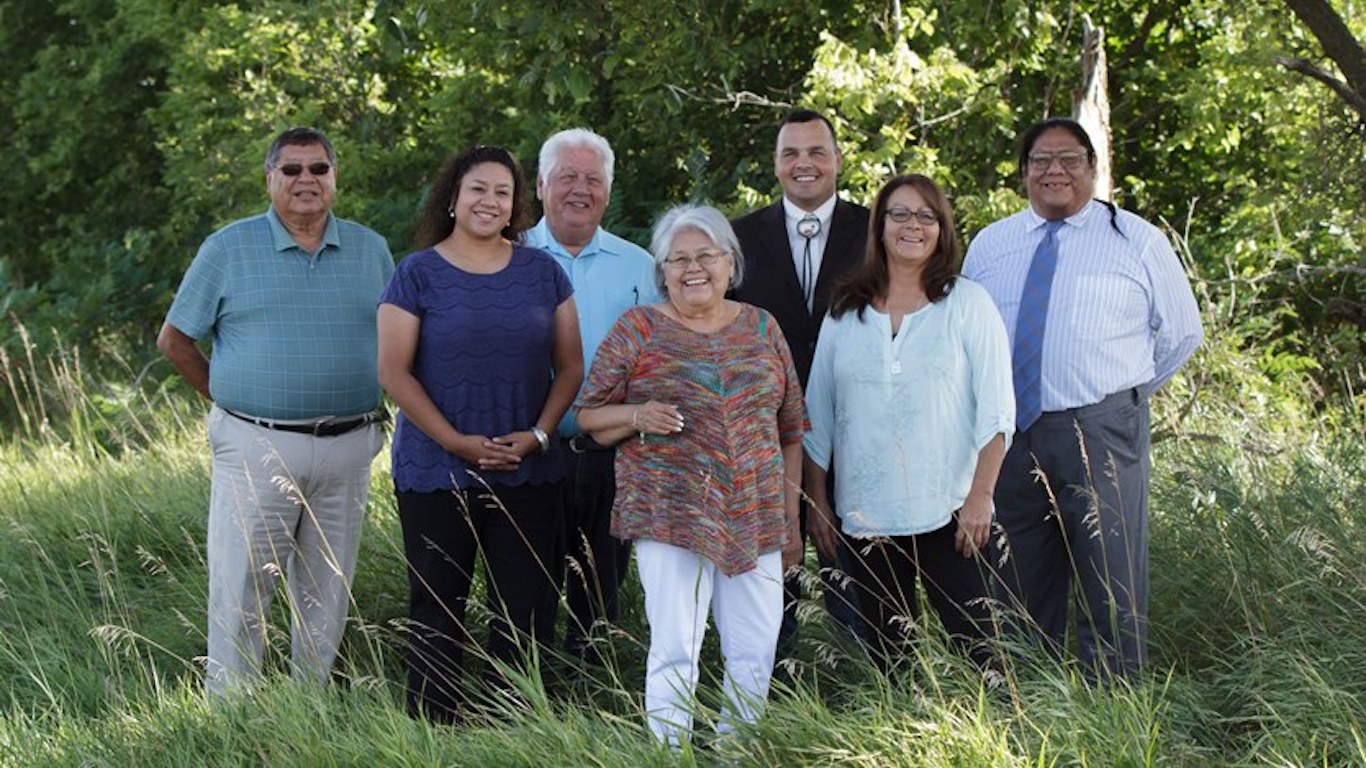
26. Kansas (tied)
> Number of American Indian areas: 5
> State population living in American Indian areas: 5,942
> Largest American Indian area: Kickapoo (KS) Reservation (population: 3,983)

25. North Dakota (tied)
> Number of American Indian areas: 5
> State population living in American Indian areas: 40,644
> Largest American Indian area: Lake Traverse Reservation and Off-Reservation Trust Land (population: 11,052)
[in-text-ad-2]
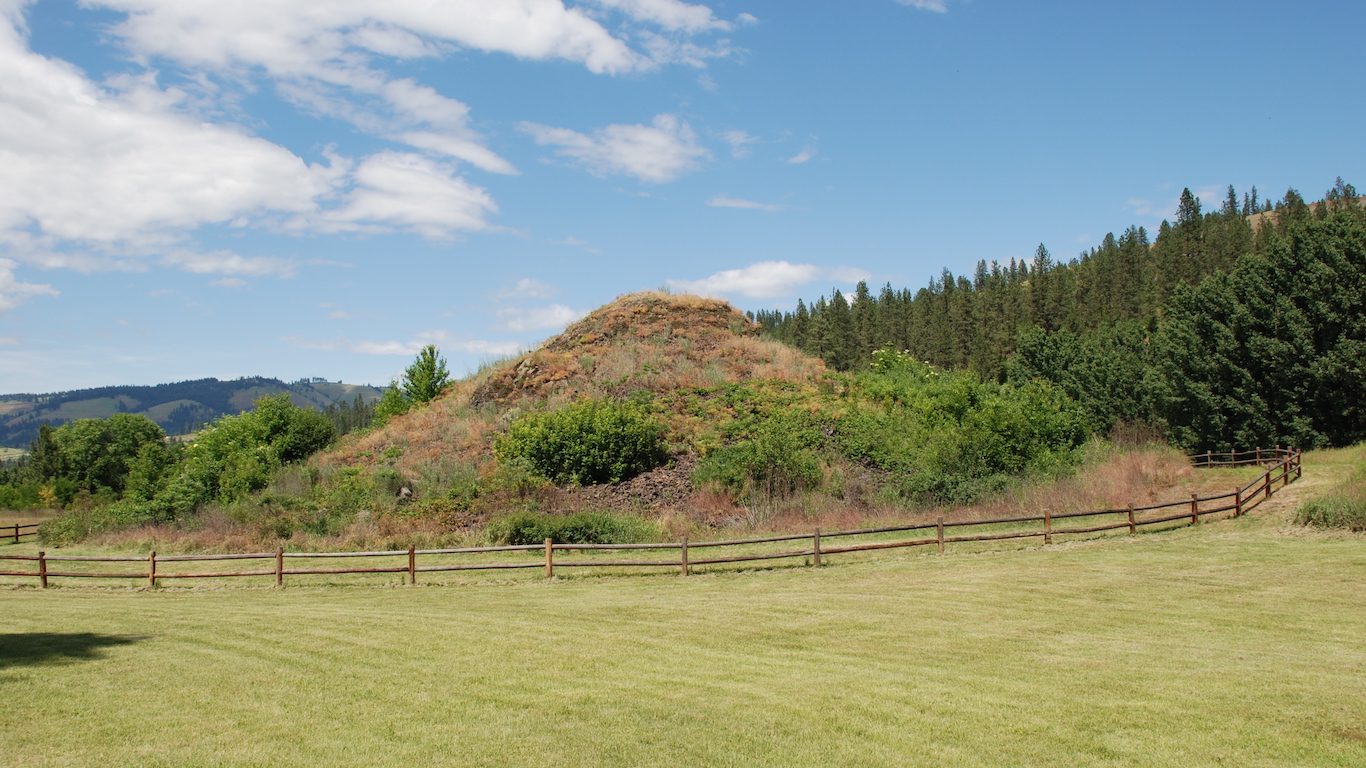
24. Idaho (tied)
> Number of American Indian areas: 5
> State population living in American Indian areas: 33,887
> Largest American Indian area: Nez Perce Reservation (population: 18,770)
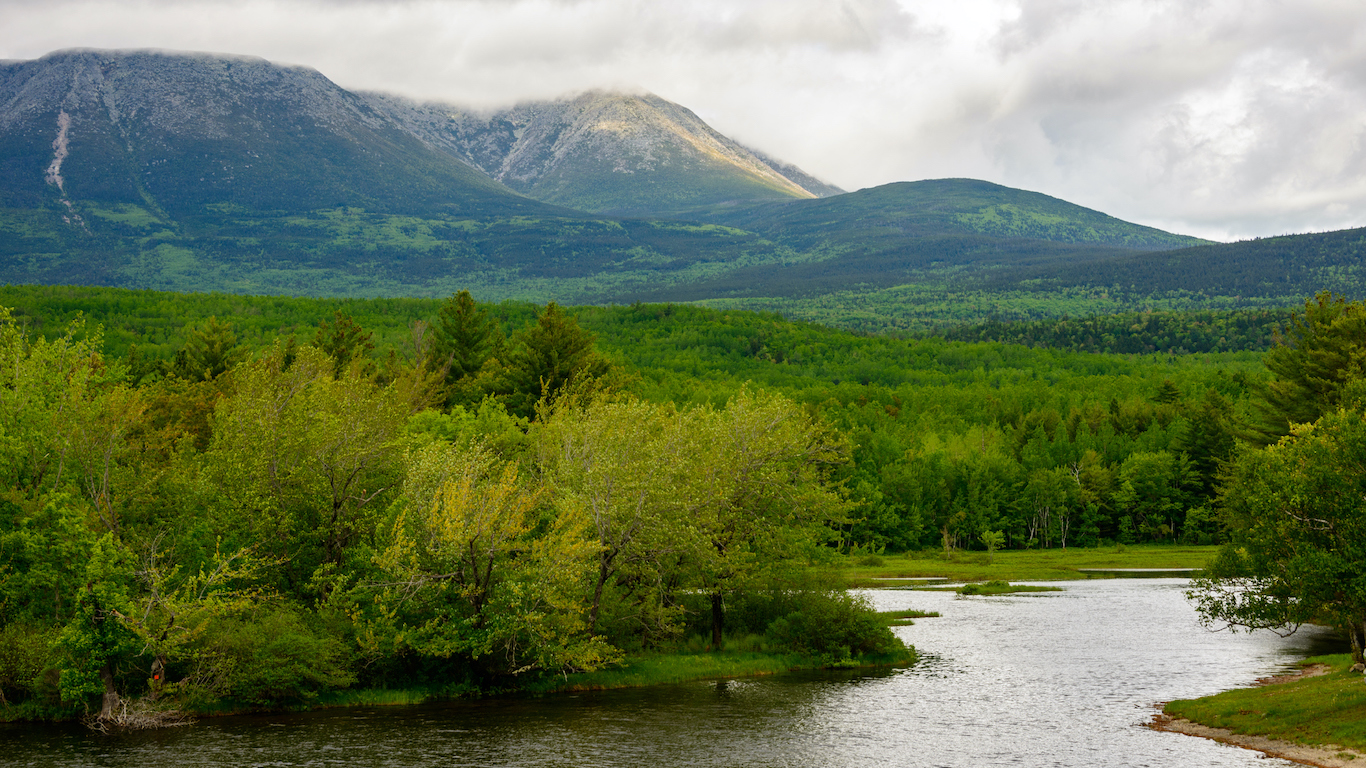
23. Maine
> Number of American Indian areas: 6
> State population living in American Indian areas: 2,807
> Largest American Indian area: Penobscot Reservation and Off-Reservation Trust Land (population: 756)
[in-text-ad]

22. South Carolina (tied)
> Number of American Indian areas: 7
> State population living in American Indian areas: 9,582
> Largest American Indian area: Pee Dee SDTSA (population: 3,210)
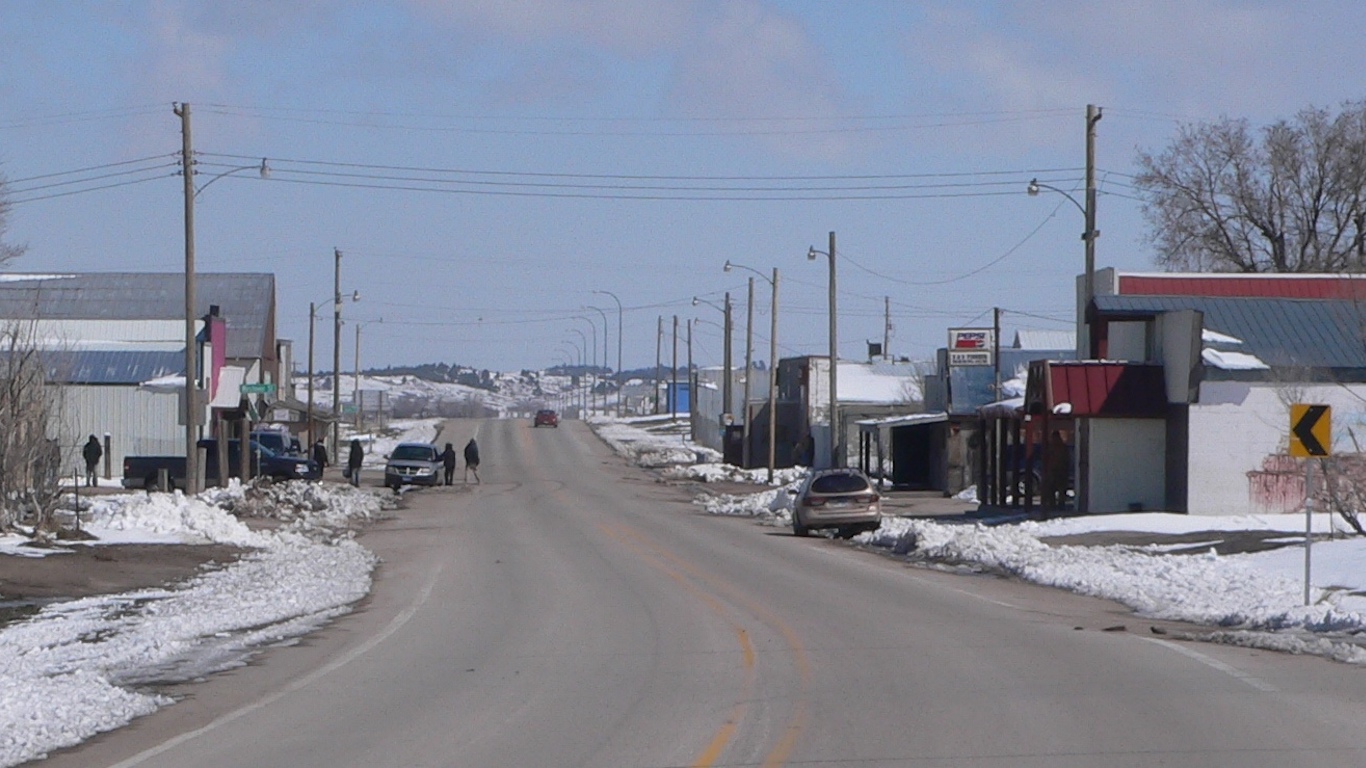
21. Nebraska (tied)
> Number of American Indian areas: 7
> State population living in American Indian areas: 29,042
> Largest American Indian area: Pine Ridge Reservation (population: 19,895)
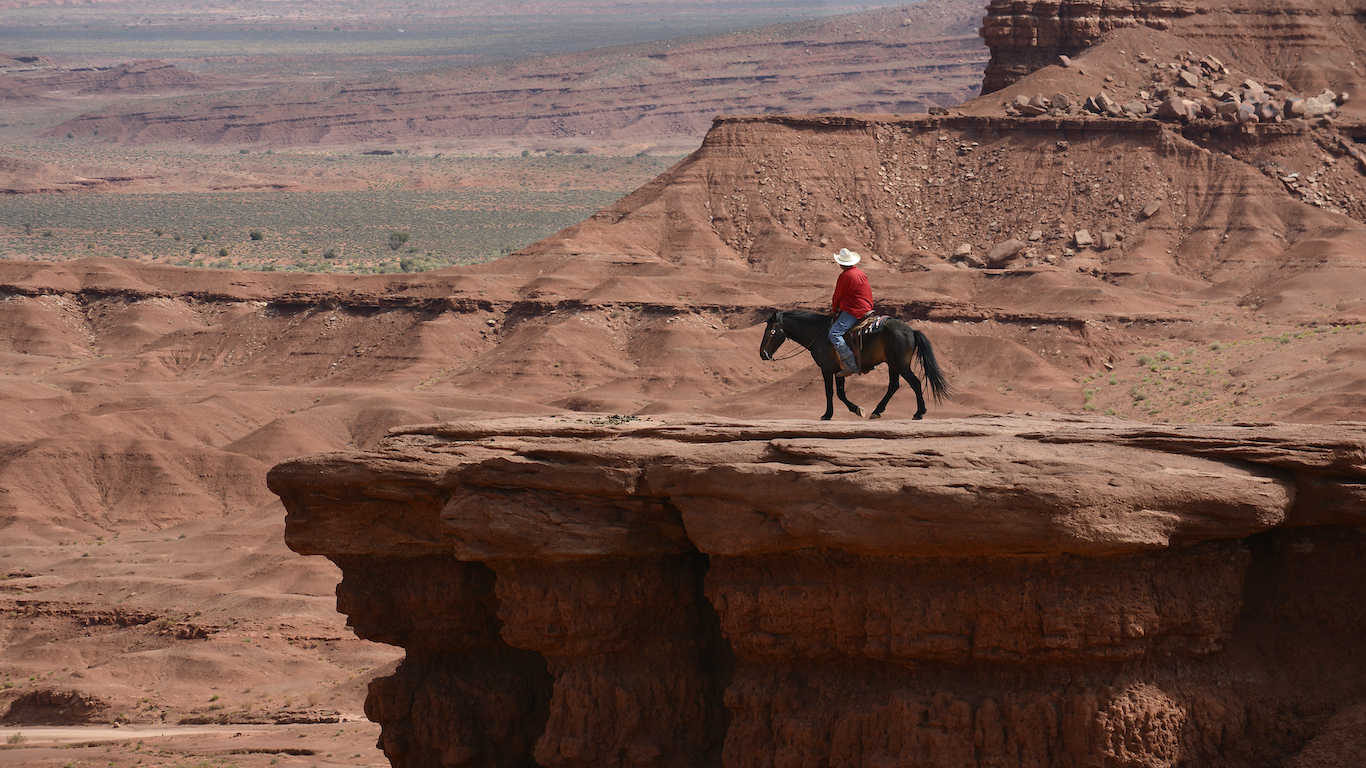
20. Utah (tied)
> Number of American Indian areas: 7
> State population living in American Indian areas: 200,823
> Largest American Indian area: Navajo Nation Reservation and Off-Reservation Trust Land (population: 172,875)
[in-text-ad-2]
19. Montana (tied)
> Number of American Indian areas: 8
> State population living in American Indian areas: 79,003
> Largest American Indian area: Flathead Reservation (population: 29,717)
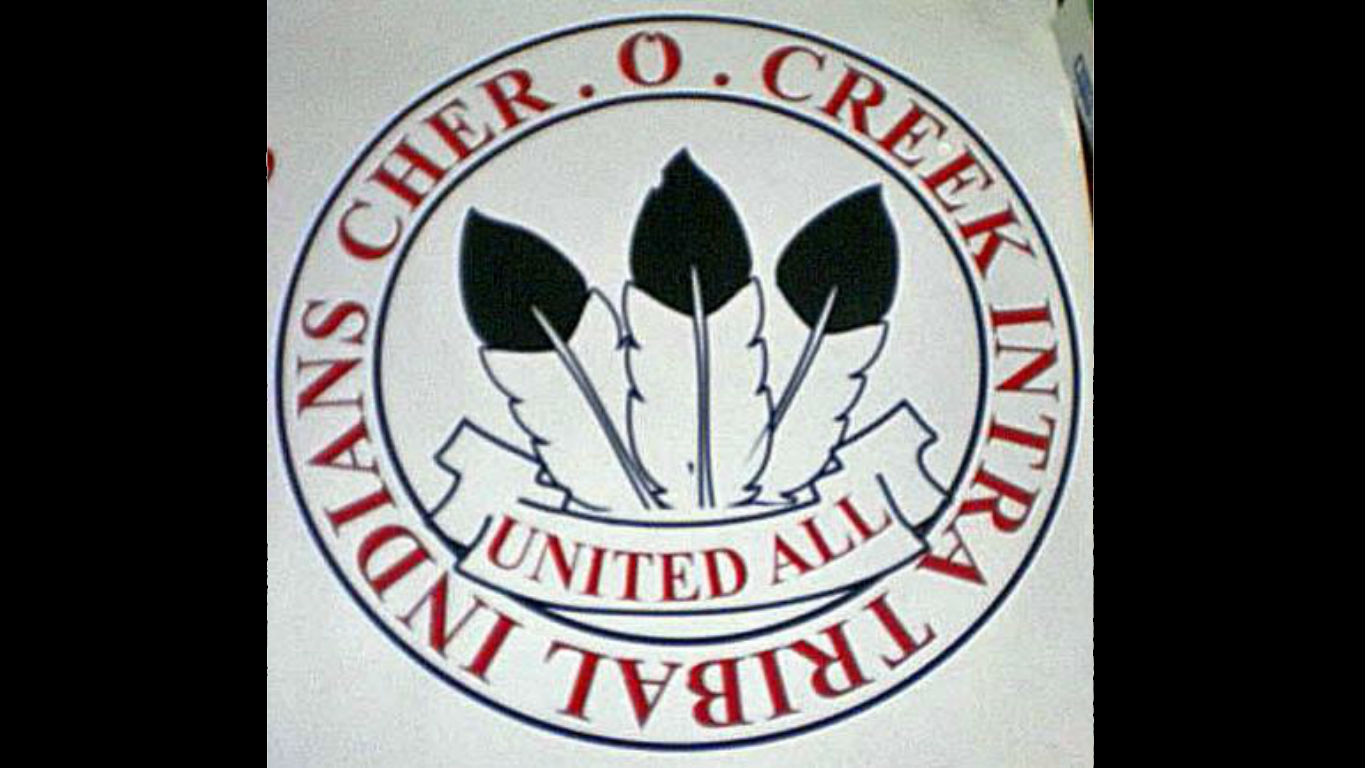
18. Alabama (tied)
> Number of American Indian areas: 8
> State population living in American Indian areas: 193,458
> Largest American Indian area: Cher-O-Creek SDTSA (population: 86,566)
[in-text-ad]
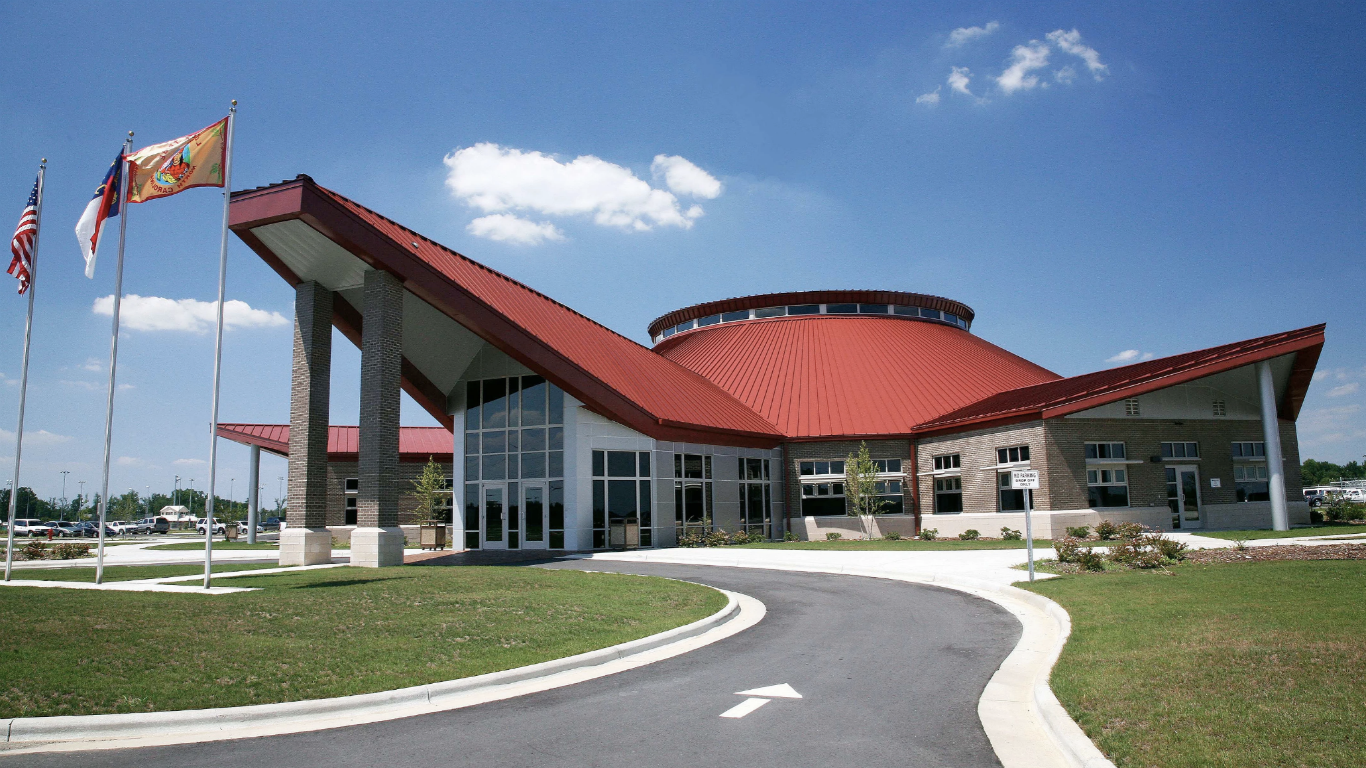
17. North Carolina (tied)
> Number of American Indian areas: 8
> State population living in American Indian areas: 605,667
> Largest American Indian area: Lumbee SDTSA (population: 503,825)
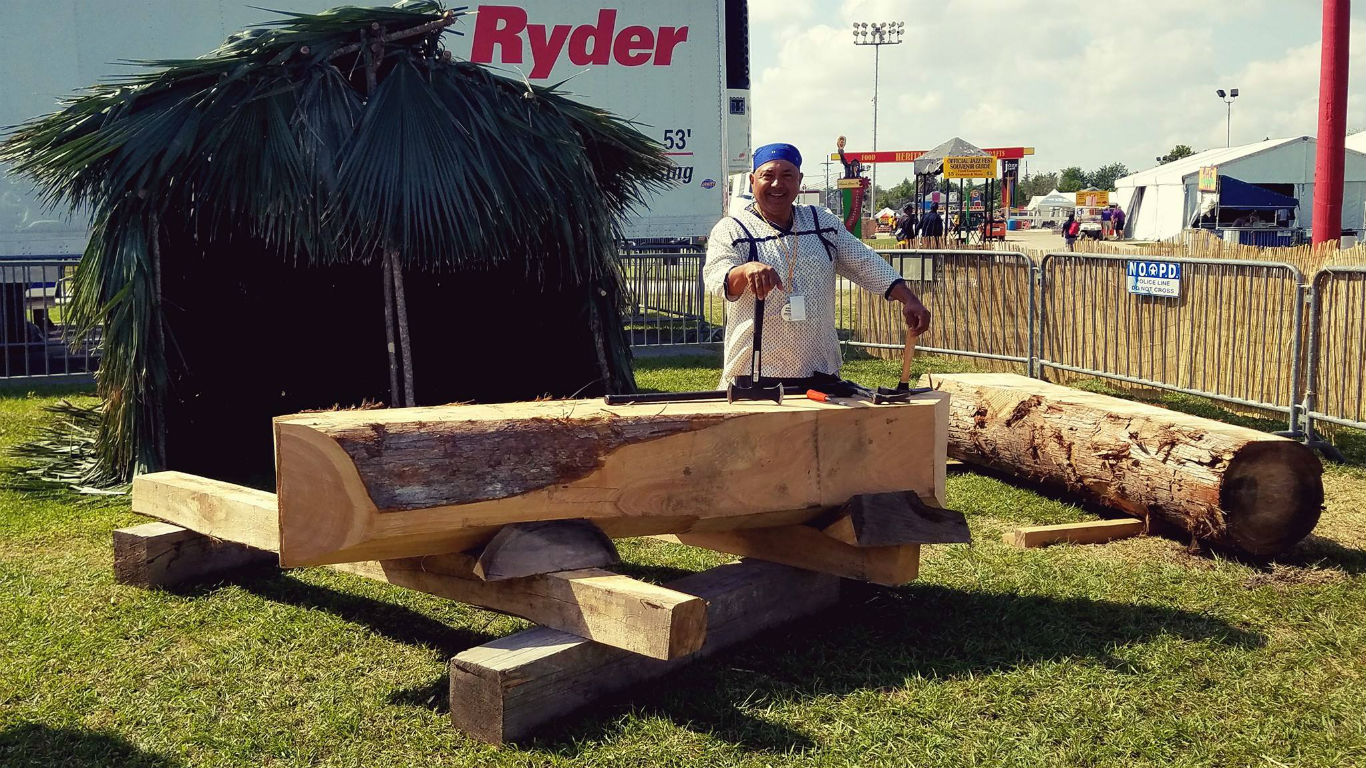
16. Louisiana
> Number of American Indian areas: 9
> State population living in American Indian areas: 245,594
> Largest American Indian area: United Houma Nation SDTSA (population: 203,711)
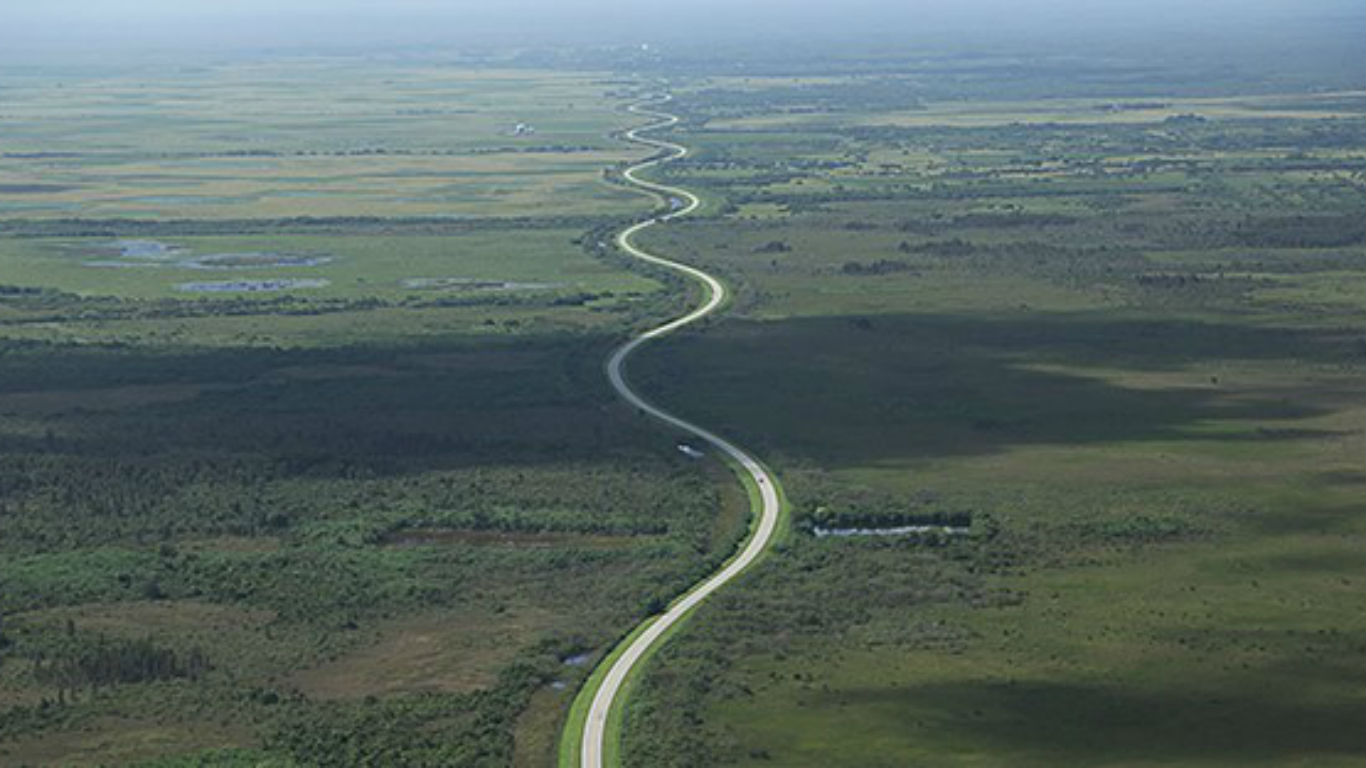
15. Florida
> Number of American Indian areas: 10
> State population living in American Indian areas: 3,117
> Largest American Indian area: Hollywood Reservation (population: 989)
[in-text-ad-2]
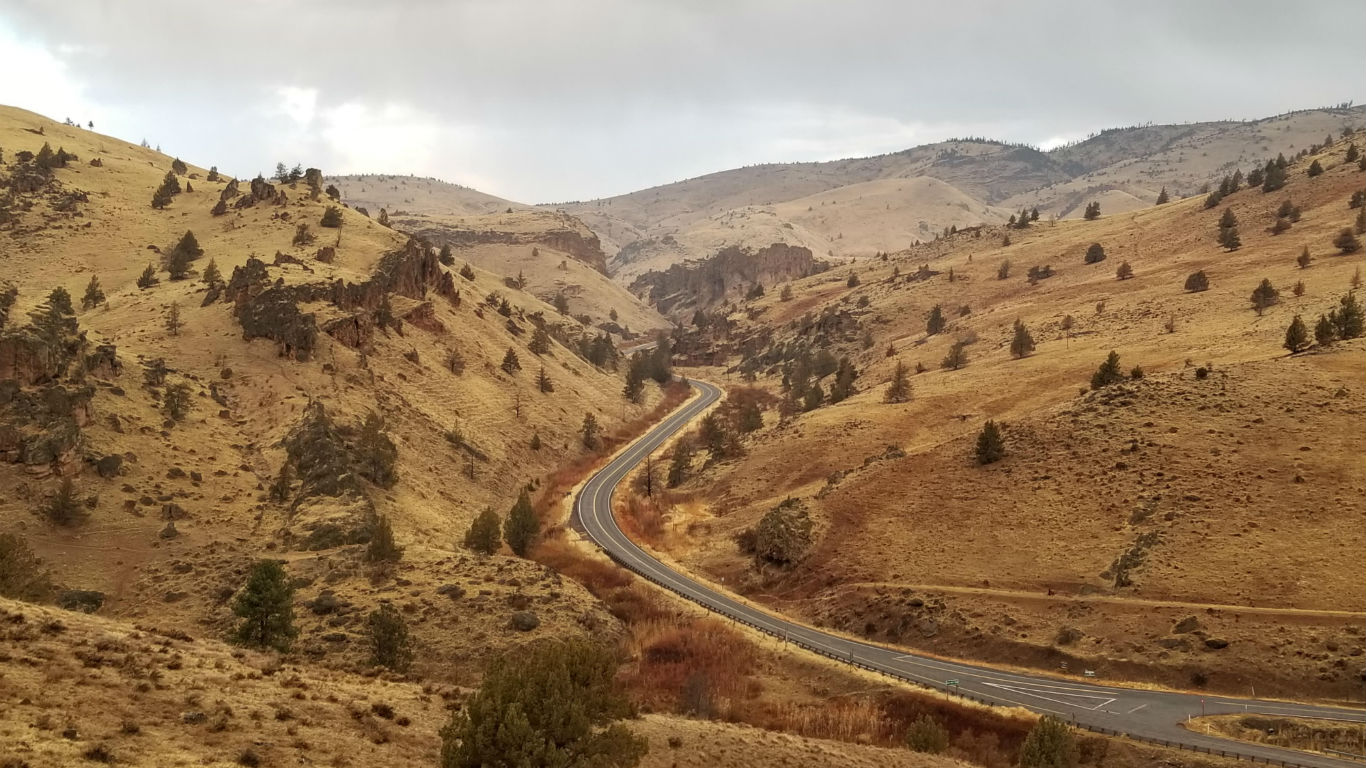
14. Oregon (tied)
> Number of American Indian areas: 11
> State population living in American Indian areas: 9,692
> Largest American Indian area: Warm Springs Reservation and Off-Reservation Trust Land (population: 4,296)
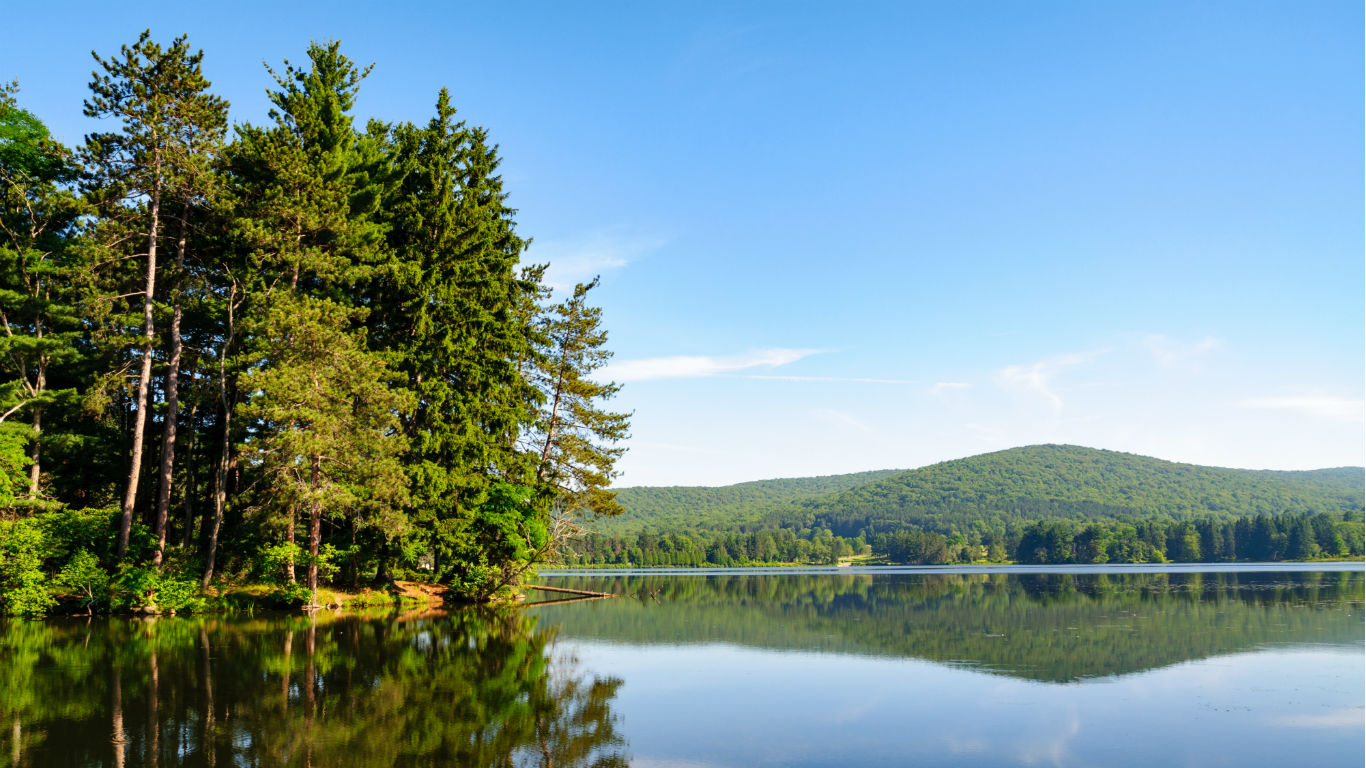
13. New York (tied)
> Number of American Indian areas: 11
> State population living in American Indian areas: 17,092
> Largest American Indian area: Allegany Reservation (population: 6,127)
[in-text-ad]
12. South Dakota (tied)
> Number of American Indian areas: 11
> State population living in American Indian areas: 84,862
> Largest American Indian area: Pine Ridge Reservation (population: 19,895)
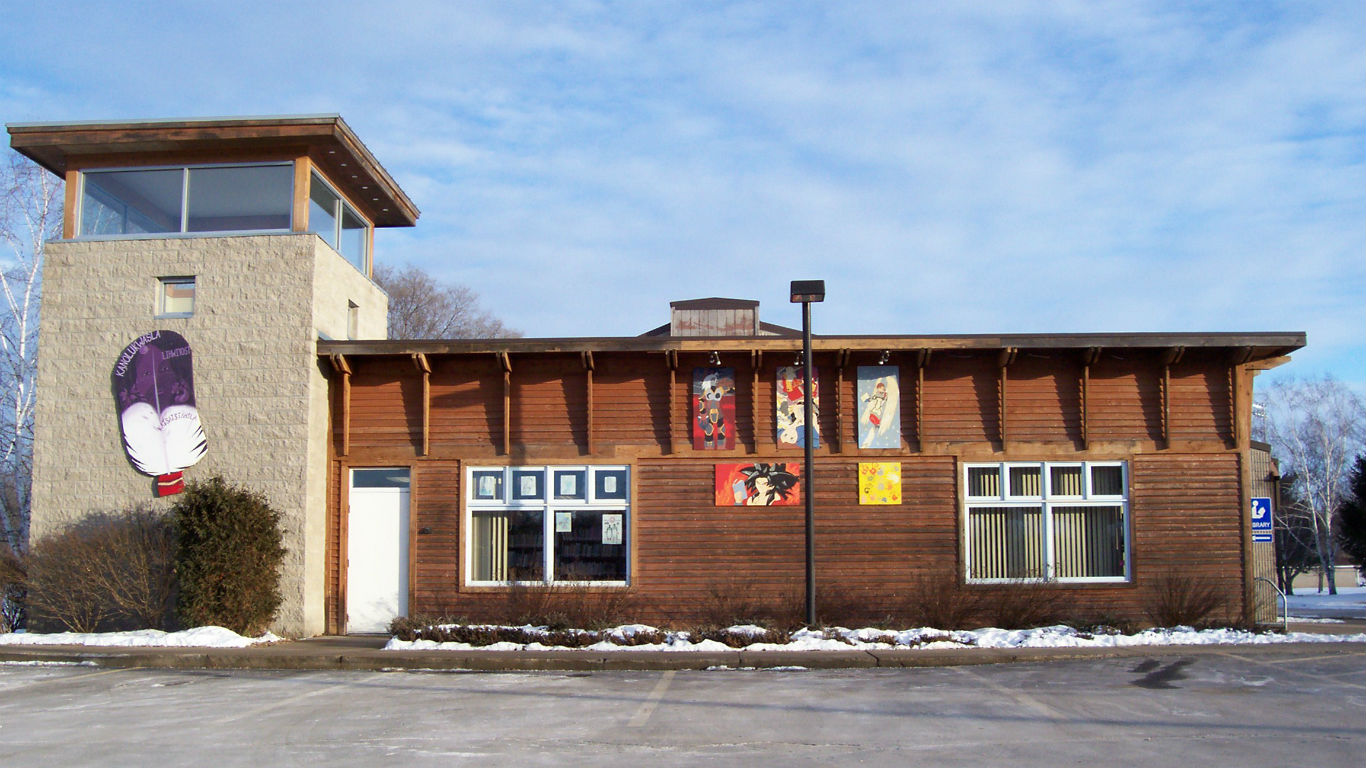
11. Wisconsin
> Number of American Indian areas: 12
> State population living in American Indian areas: 45,343
> Largest American Indian area: Oneida (WI) Reservation and Off-Reservation Trust Land (population: 24,800)
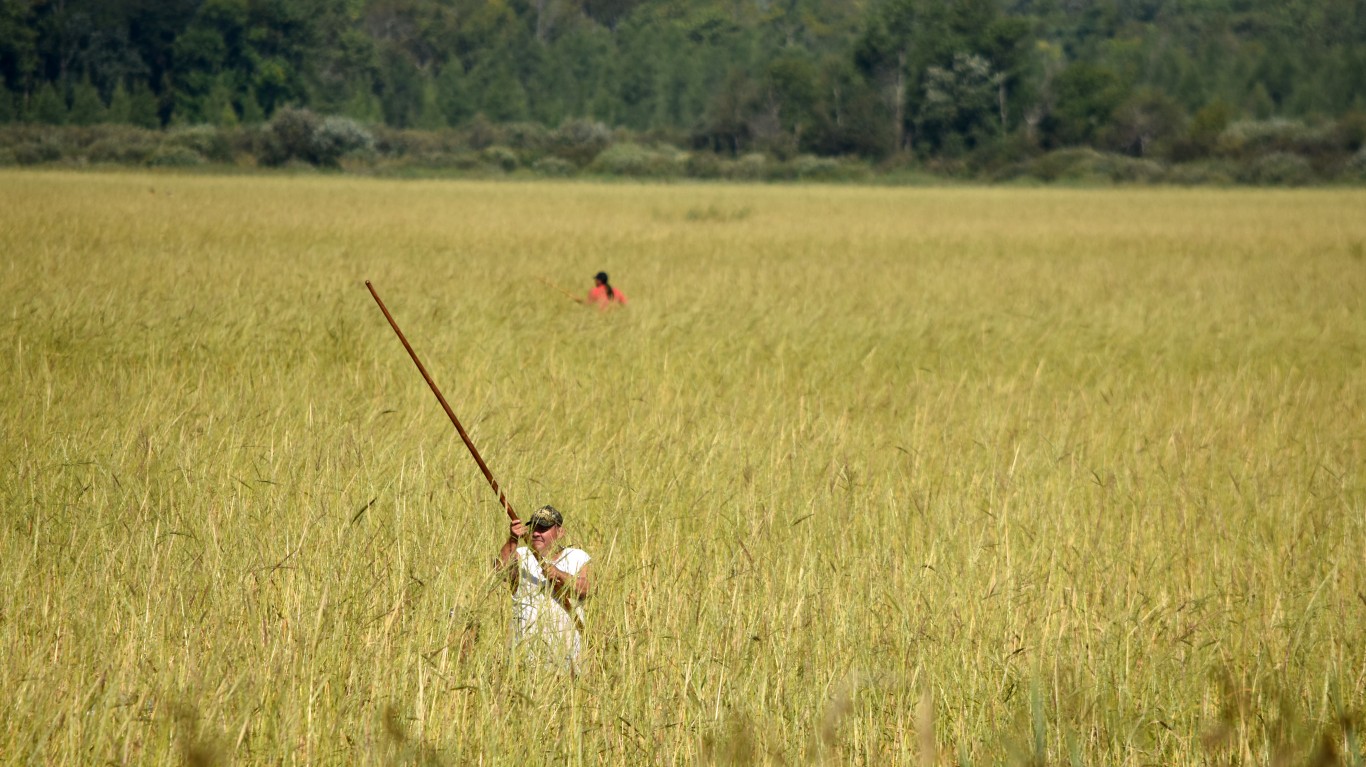
10. Minnesota (tied)
> Number of American Indian areas: 13
> State population living in American Indian areas: 40,834
> Largest American Indian area: Leech Lake Reservation and Off-Reservation Trust Land (population: 11,229)
[in-text-ad-2]

9. Michigan (tied)
> Number of American Indian areas: 13
> State population living in American Indian areas: 36,598
> Largest American Indian area: Isabella Reservation (population: 27,617)
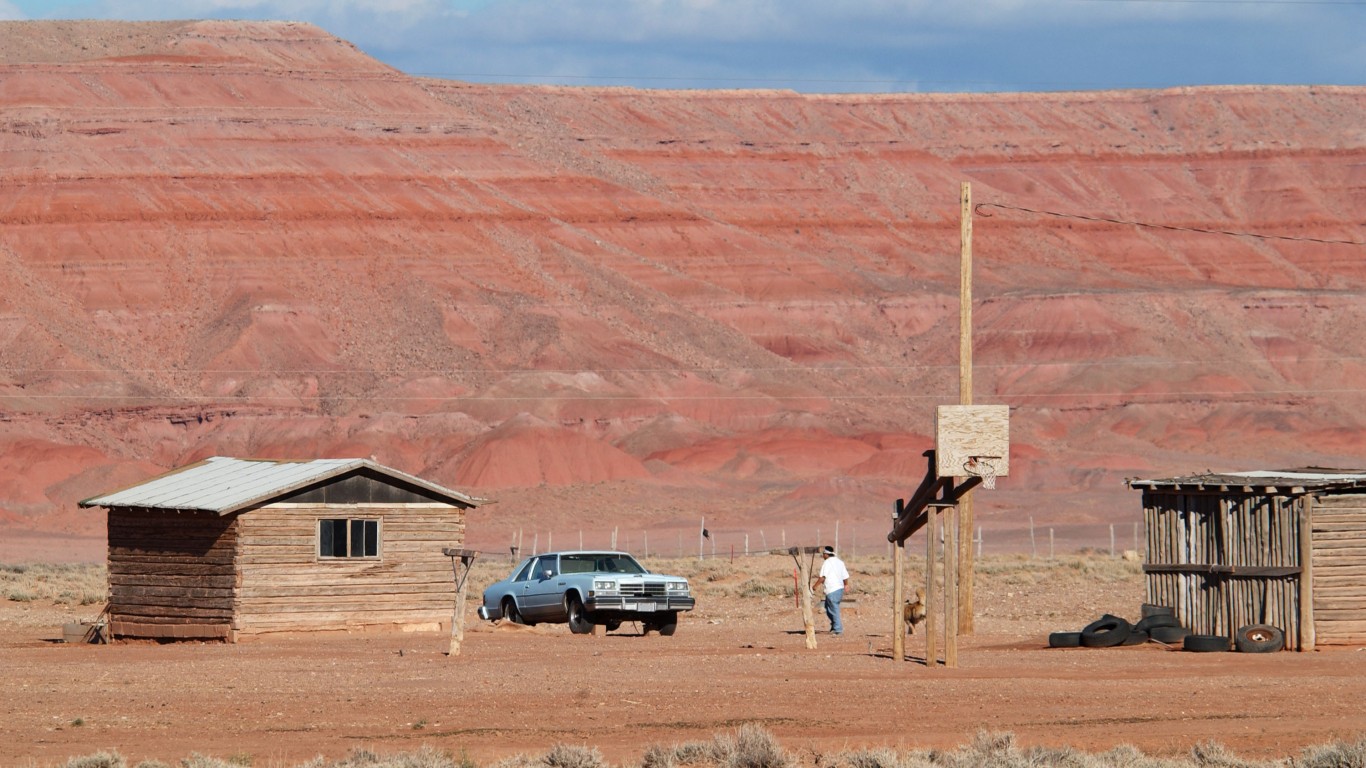
8. Arizona
> Number of American Indian areas: 21
> State population living in American Indian areas: 270,709
> Largest American Indian area: Navajo Nation Reservation and Off-Reservation Trust Land (population: 172,875)
[in-text-ad]
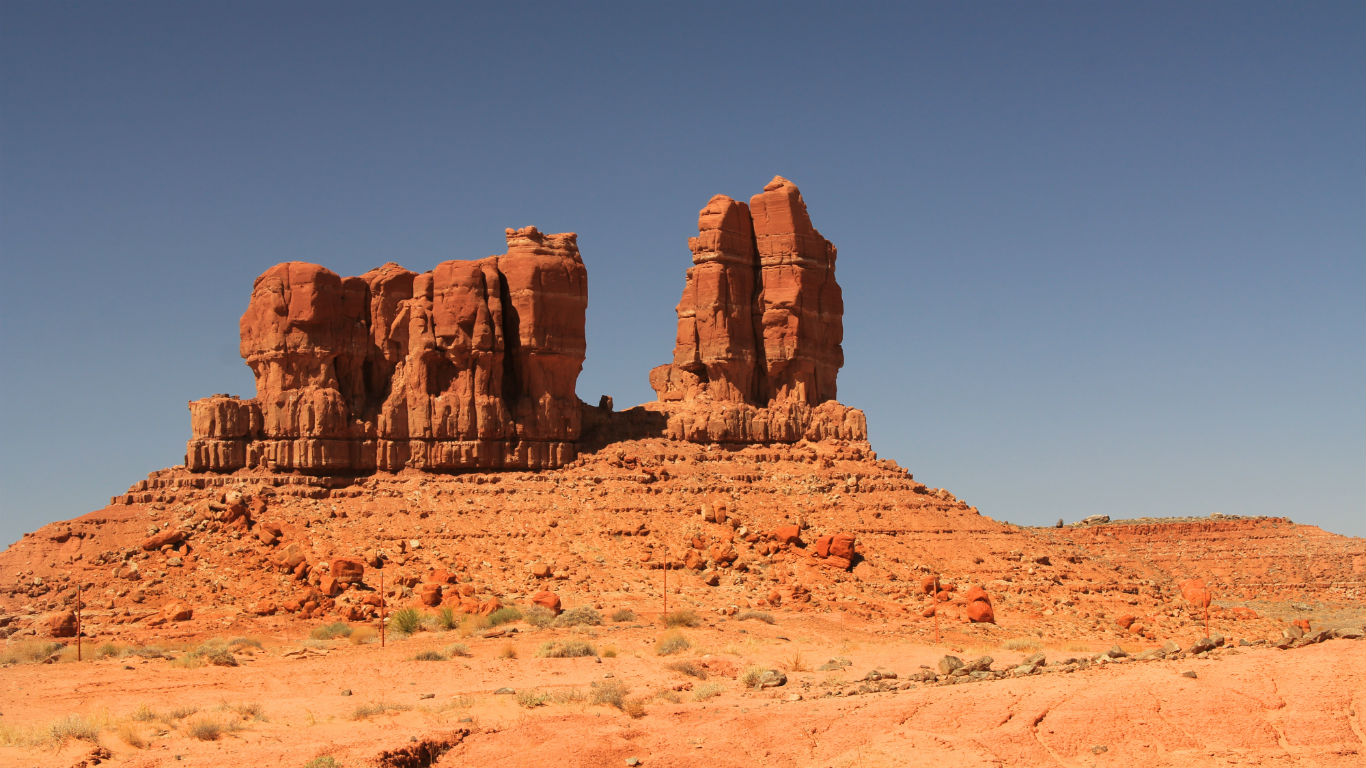
7. New Mexico
> Number of American Indian areas: 26
> State population living in American Indian areas: 252,110
> Largest American Indian area: Navajo Nation Reservation and Off-Reservation Trust Land (population: 172,875)
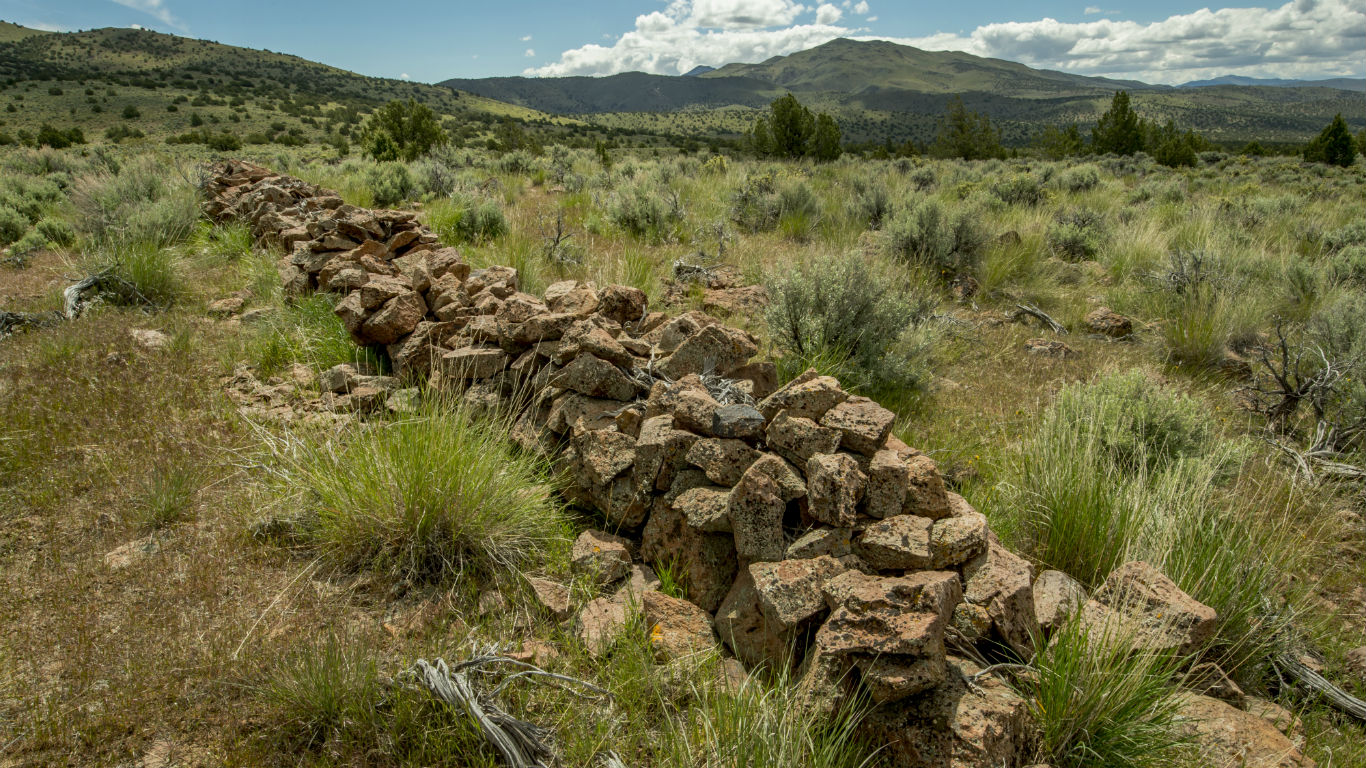
6. Nevada
> Number of American Indian areas: 28
> State population living in American Indian areas: 15,680
> Largest American Indian area: Washoe Ranches Trust Land (population: 3,096)
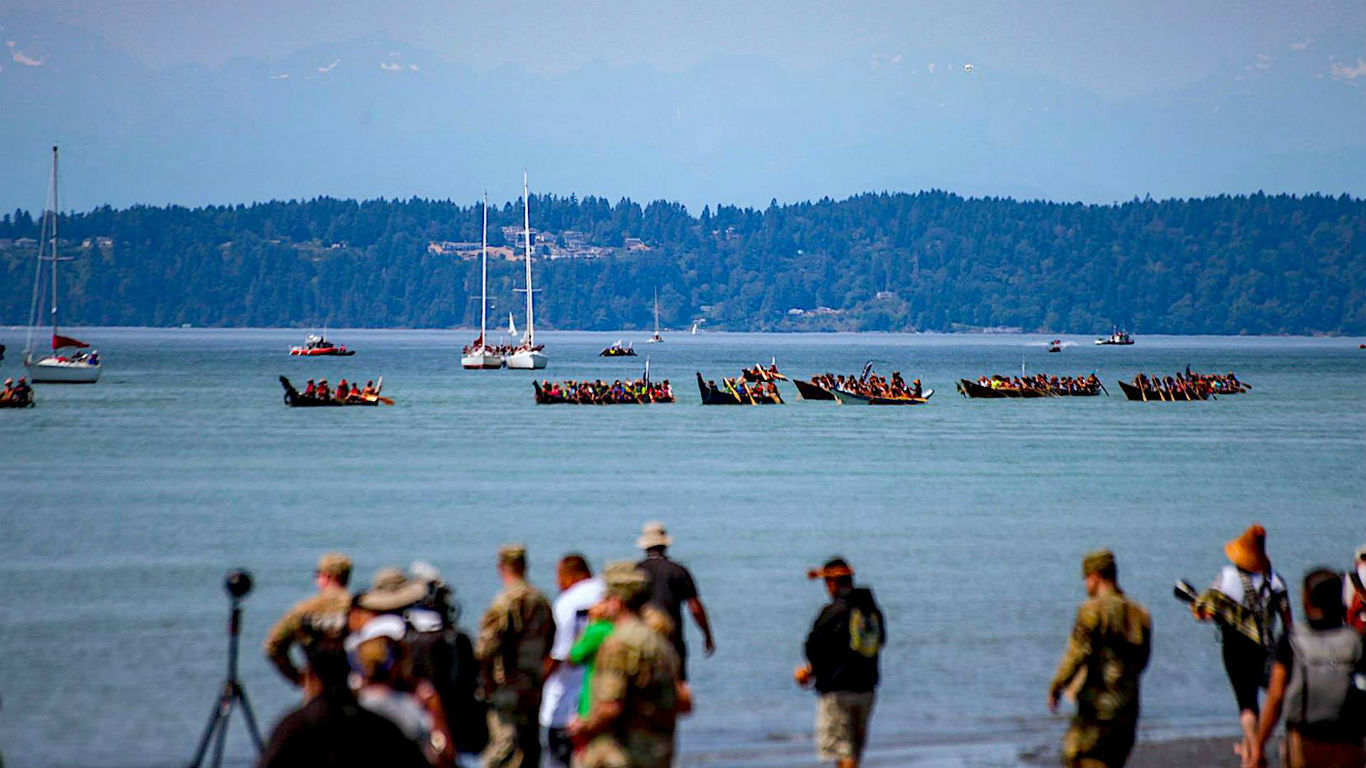
5. Washington
> Number of American Indian areas: 29
> State population living in American Indian areas: 169,534
> Largest American Indian area: Puyallup Reservation and Off-Reservation Trust Land (population: 51,407)
[in-text-ad-2]

4. Oklahoma
> Number of American Indian areas: 30
> State population living in American Indian areas: 2,626,580
> Largest American Indian area: Creek OTSA (population: 792,241)
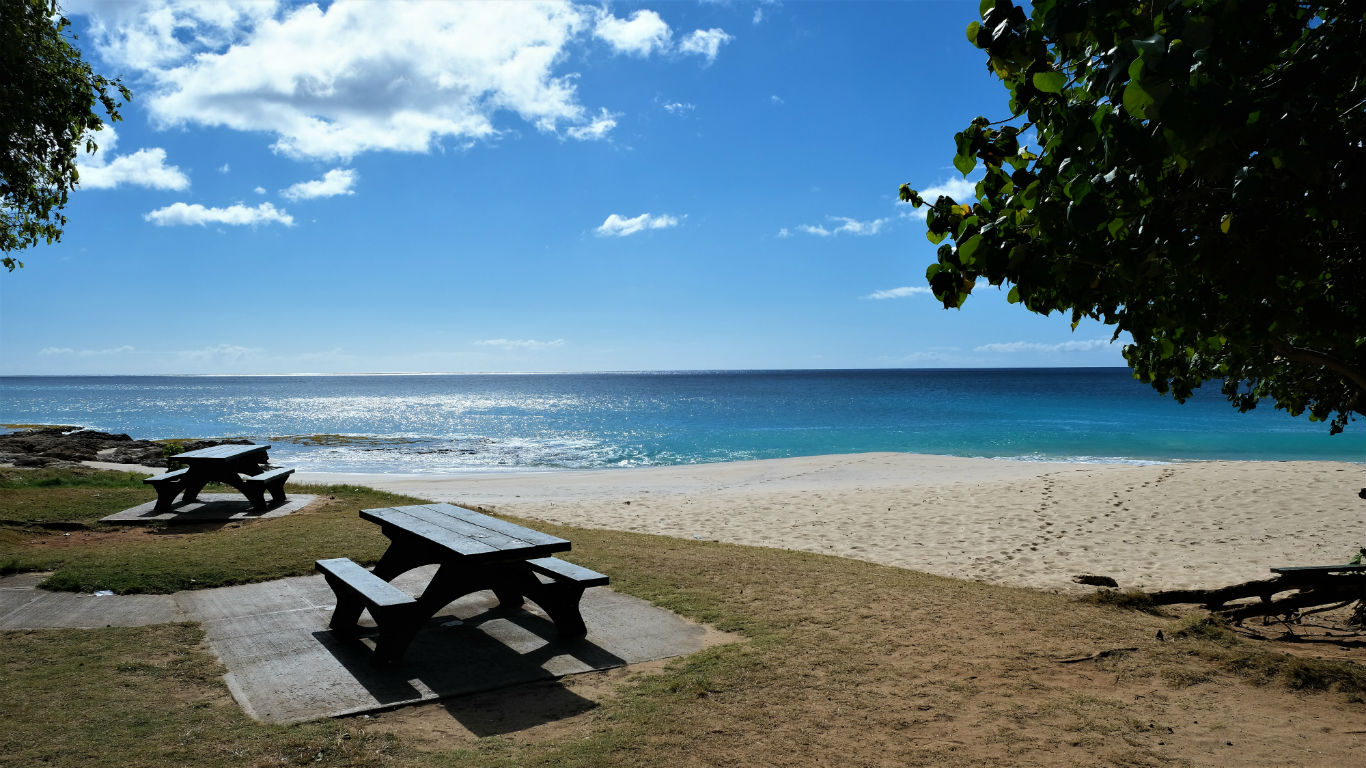
3. Hawaii
> Number of American Indian areas: 75
> State population living in American Indian areas: 36,090
> Largest American Indian area: Nanakuli Hawaiian Home Land (population: 5,141)
[in-text-ad]
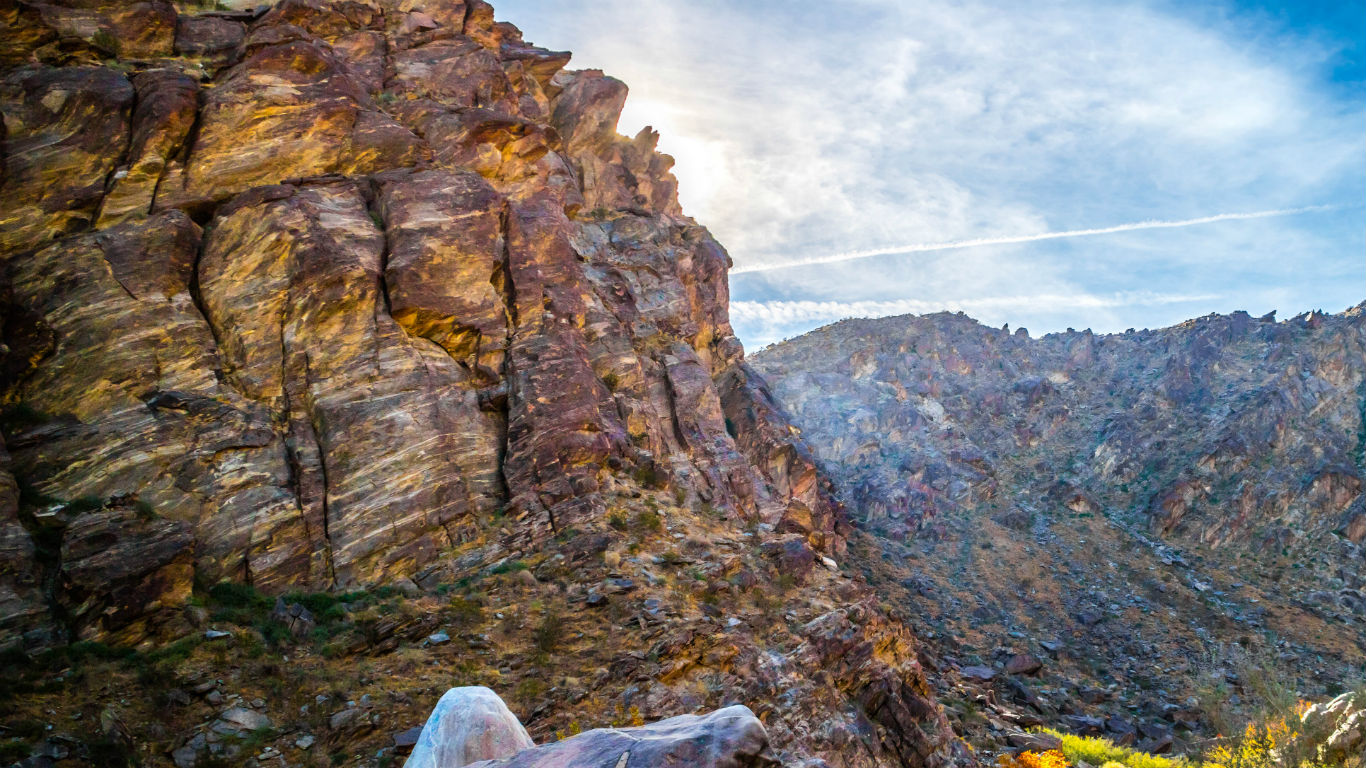
2. California
> Number of American Indian areas: 108
> State population living in American Indian areas: 73,581
> Largest American Indian area: Agua Caliente Indian Reservation and Off-Reservation Trust Land (population: 26,028)

1. Alaska
> Number of American Indian areas: 221
> State population living in American Indian areas: 266,602
> Largest American Indian area: Knik ANVSA (population: 76,056)
Retirement planning doesn’t have to feel overwhelming. The key is finding expert guidance—and SmartAsset’s simple quiz makes it easier than ever for you to connect with a vetted financial advisor.
Here’s how it works:
Why wait? Start building the retirement you’ve always dreamed of. Click here to get started today!
Thank you for reading! Have some feedback for us?
Contact the 24/7 Wall St. editorial team.